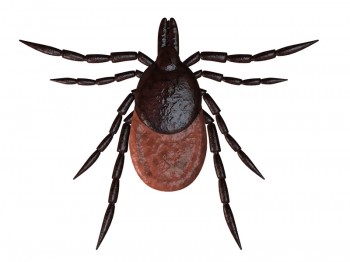 Kayla picked up a tick during her little outing last weekend, so I had the opportunity to do a little research this morning on tick removal.
Kayla picked up a tick during her little outing last weekend, so I had the opportunity to do a little research this morning on tick removal.
I had always used the hot match on the tick’s butt routine, but I didn’t have any matches handy this time, so I went online to find out some alternate methods.
Turns out that they now recommend you DON”T use a hot match. Instead, take a set of tweezers and grasp the tick as close to the dog’s skin as possible. This is a two person operation, as the dog may get a little freaked out and need to be held down. Gently pull the tick straight out. You should be able to see his head, still attached to the body, but if not, don’t worry about it. The left-behind mouth parts will eventually work their way out, just as a splinter does. If you do leave any part of the tick still in the skin, make sure to watch the area for infection.
Drs. Foster and Smith recommend that you kill the tick by putting it in alcohol. It will not be killed by flushing it down the toilet.
Make sure you don’t touch the tick with your bare hands – “you don’t know where that’s been!” Seriously, because ticks are known to carry disease, it is better if you don’t touch them, and make sure you wash your hands after you have removed the tick from your dog.
The area around the bite will heal over the course of a week or so. It is not uncommon for a little welt to develop, and then resolve slowly. Apply a little antibiotic ointment for a few days to lessen the chance of infection. It’s possible a small scar will develop, preventing future hair growth.
Lyme disease: If you found a tick on your dog, chances are it is not the type of tick that carries Lyme disease. Surprise – who knew there were different kinds? The deer tick, which carries the bacteria associated with Lyme disease, is too small for you to find by examining your dog when he comes in from a romp in the woods.
Instead, if you live in an area where Lyme disease is prevalent, keep an eye out for symptoms which may signal the onset of the disease: loss of energy and joint pain. There is a vaccine available to help prevent Lyme disease – ask your vet if it is right for your dog. A thorough article, including pictures can be found here.
Until next time,
Good day, and good dog!
